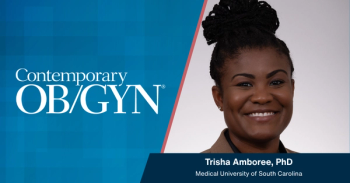
- Vol 68 No 05
- Volume 68
- Issue 05
Uterine-sparing techniques for symptomatic adenomyosis
In a recent study, uterine-sparing techniques led to reduced rates of recurrence and reintervention in patients with adenomyosis.
The risk of recurrence and reintervention is decreased in patients with adenomyosis following uterine-sparing techniques, according to a recent study published in Obstetrics & Gynecology.
Adenomyosis, presenting as an invasion of endometrial glands and stroma into the myometrium, is a gynecological condition affecting an estimated 20% to 34% of women. Older patients are at a greater risk of adenomyosis, with individuals aged 40 to 49 years seeing the highest incidence.
Adenomyosis leads to chronic pelvic pain, heavy menstrual bleeding, painful menses, infertility, dyspareunia, and obstetric complications. Medical therapy and hysterectomy are the most common methods of treatment, but medical therapy often leads to adverse events and recurrence, and hysterectomy does not preserve fertility.
Uterine-sparing interventions such as image-guided thermal ablation,uterine artery embolization (UAE), and adenomyomectomy are less understood than medical therapy and hysterectomy. However, these techniques allow patients to experience improved symptoms without losing fertility.
To understand the risk of recurrence and reintervention in patients with adenomyosis after uterine-sparing interventions, investigators conducted a systematic review and meta-analysis. Image-guided thermal ablation, UAE, and adenomyomectomy were the interventions assessed.
Databases for articles on uterine-sparing interventions for symptomatic adenomyosis included Web of Science, MEDLINE, Cochrane Library, EMBASE, ClinicalTrials.gov, and Google Scholar. Articles published from January 2000 to January 2022 were collected.
Inclusion criteria for studies included having patients with confirmed symptomatic adenomyosis, being focused on uterine-sparing interventions for managing symptomatic adenomyosis, having data from a uterine-sparing intervention if comparing to other methods, and reporting at least 1 of the outcome measures of interest.
Studies gathered were also published in a peer-reviewed journal and were English-language articles. Exclusion criteria included recommending hysterectomy for symptomatic adenomyosis, not reporting an outcome measure of interest, having under 10 patients, overlapping with other studies, not being a study design, and not being in English.
Recurrence rate and reintervention rate were the primary outcomes measured in the study. Recurrence was defined as the reemergence of symptoms after strong remission, while reintervention was defined as the process of an additional intervention because of recurrence. Hysterectomy was the most common additional intervention.
Study selection and evaluation was completed by 2 independent researchers, with a third consulted in cases of discrepancy. A similar process occurred for risk of bias and evidence quality, along with extracting clinical data from each article.
There were 42 studies included in the analysis, 14 on adenomyomectomy, 16 on UAE, and 12 on image-guided thermal ablation. Of the 5877 patients within the studies, adenomyomectomy, occurred in 1790, UAE in 816, and image-guided thermal ablation in 3271.
Studies ranged from poor to medium quality, with 66.7% being poor quality and 33.3% medium quality. Patients receiving adenomyomectomy were aged an average 33.6 to 43.4 years, UAE 36.7 to 50 years, and image-guided thermal ablation 34 to 42.4 years.
The adenomyomectomy group had a recurrence rate of 12.6% and a reintervention rate of 2.6%, the UAE group a recurrence rate of 29.5% and reintervention rate of 12.8%, and the image-guided thermal ablation group a recurrence rate of 10% and reintervention rate of 8.2% The overall recurrence and reintervention rates were 15.2% and 7.4% respectively.
Low recurrence rates were considered under 30%, while low intervention rates were considered under 13%. This indicates the overall recurrence and reintervention rates were low, showing potential effectiveness for uterine-sparing interventions.
Reference
Lu L, Hongyan T, Dongmei L, Liang Z, Hui W, Yi H.Risk of recurrence and reintervention after uterine-sparing interventions for symptomatic adenomyosis. Obstetrics & Gynecology. 2023. doi:10.1097/AOG.0000000000005080
Articles in this issue
over 2 years ago
Long-acting reversible contraceptive use among adolescentsover 2 years ago
Is this a missed diagnosis of abnormal uterine bleeding?over 2 years ago
Learning to live with changeover 2 years ago
Pruritic rash in vulvovaginal area of 2-year-old girlover 2 years ago
Unplanned military pregnancies are decliningover 2 years ago
Postmenopausal osteoporosisover 2 years ago
Elinzanetant demonstrates rapid reduction in VMS frequencyover 2 years ago
Best practices for well woman visits for the adolescent patientNewsletter
Get the latest clinical updates, case studies, and expert commentary in obstetric and gynecologic care. Sign up now to stay informed.




















